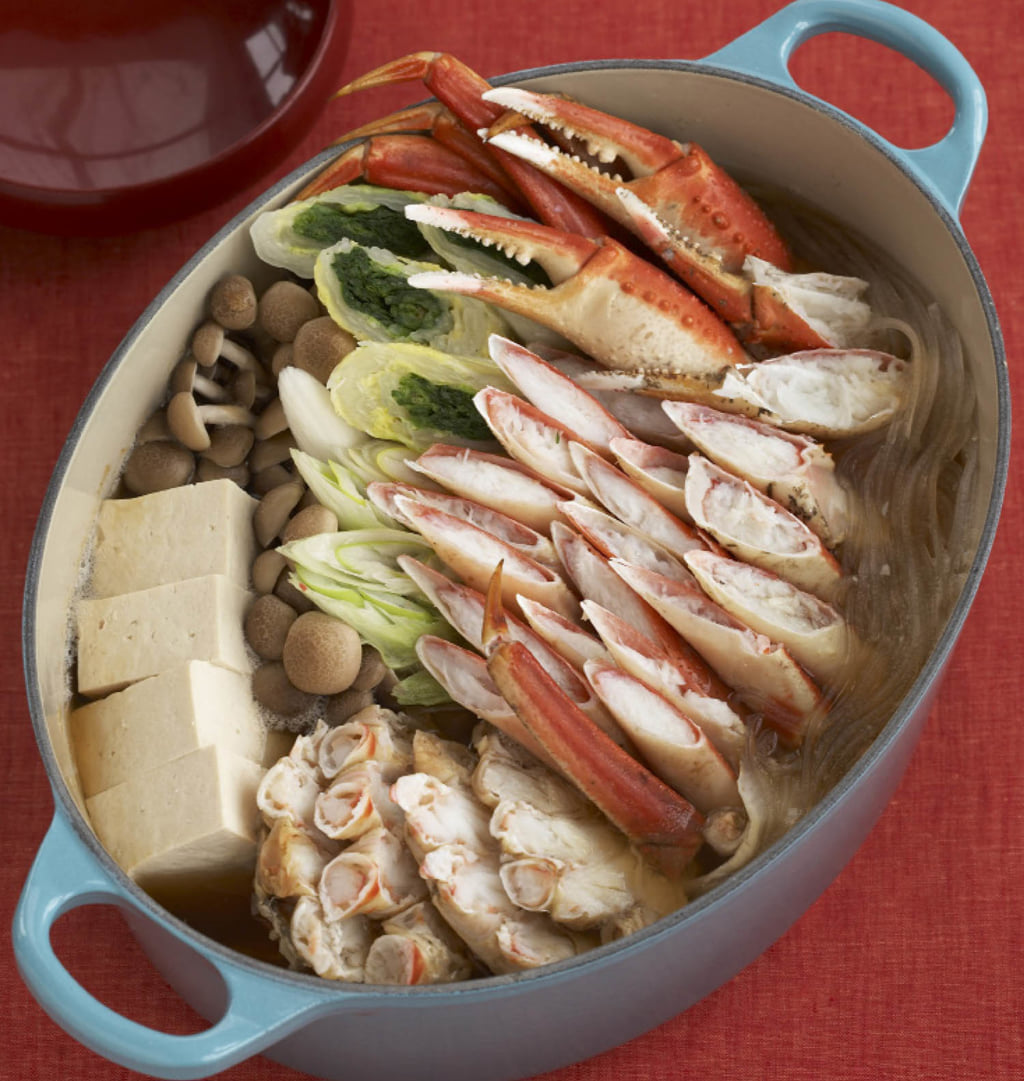Tadashi Ono and Harris Salat’s Crab Hot Pot
This ‘kani nabe’ showcases a crustacean found on the island of Hokkaido in a recipe known for its difficulty, simplified here by the chefs.

Ten Speed Press
Kani nabe is a typical Japanese dish served in winter. It is very popular, especially on the island of Hokkaido, Japan’s northernmost region, which is known for the quality of its crustaceans. Made using fresh crab and vegetables in dashi made from seaweed or bonito flakes, it is served at the table in the earthenware dish used to cook it.
This recipe is known for being difficult to make as the crab needs to be cooked skilfully to avoid becoming too dry. But chef Tadashi Ono and food journalist Harris Salat deliberately chose to include it in their book Japanese Hot Pots to demystify this traditional Japanese dish.
Before eating, the chefs advise: ‘Eat the crab first, as soon as it’s ready, followed by the other ingredients. This way, it will be at its most tender and will slide out of its shell easily.’
Japanese Hot Pots features salty broths and healthy ingredients that are easy to get hold of, such as seafood, poultry, green vegetables, roots, mushrooms, and noodles. Cooked in classic receptacles, they require very little preparation and no special equipment.
Serves 4
Ingredients
900 g crab, precooked or raw, cut into pieces
1 l dashi
125 ml usukuchi soy sauce
125 ml mirin
30 g harusame, soaked in water for 15 minutes
1 napa cabbage-spinach roll, sliced
1/2 pack (about 225 g) firm tofu, cut into four pieces
1 negi, sliced on an angle into 5-cm pieces
100 g shimeji mushrooms, trimmed and pulled apart
60 g momiji oroshi, for garnish
120 g shibori scallions, for garnish
Method
To make the crab easier to eat, with a sharp, heavy knife, cut through the crab’s leg joints, slice off strips of shell, and cut incisions into the claws.
Prepare the broth by combining the dashi, soy sauce, and mirin in a bowl. Set aside.
Place the harusame on the bottom of a hot pot. Add the crab, slices of napa cabbage–spinach roll, tofu, negi, and shimeji mushrooms to the top of the harusame, arranging each ingredient in a separate, neat bunch. Pour in the reserved broth.
Cover the hot pot and bring it to a boil over high heat. Decrease the heat to medium and let simmer for five more minutes.
Transfer the hot pot to the dining table. Serve the ingredients together with the broth in small bowls. Garnish with the momiji oroshi and the shibori scallions.
Japanese Hot Pots (2009), by Harris Salat and Tadashi Ono, is published by Ten Speed Press.
Harris Salat and Tadashi Ono have written other cookbooks together, such as Japanese Soul Cooking and The Japanese Grill.

Ten Speed Press
TRENDING
-
Ishiuchi Miyako, A Singular Perspective on Women
Recipient of the 2024 Women in Motion Award, the photographer creates intimate portraits of women through the objects they left behind.

-
Recipe for Ichiraku Ramen from ‘Naruto’ by Danielle Baghernejad
Taken from the popular manga with the character of the same name who loves ramen, this dish is named after the hero's favourite restaurant.

-
Namio Harukawa, Master of Japanese SM Art
'Garden of Domina' offers a dive into the world of an icon of ‘oshiri’, whose work has now reached a global audience.

-
The Tattoos that Marked the Criminals of the Edo Period
Traditional tattoos were strong signifiers; murderers had head tattoos, while theft might result in an arm tattoo.

-
The Emperor of Japanese Porn is Now the Star of a Netflix Series
Deliciously funny, The Naked Director especially succeeds in reviving the atmosphere that was so characteristic of 1980s Japan.





